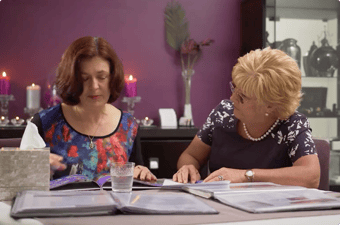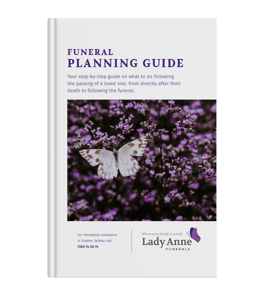Retirement is often seen as a time to relax and enjoy the fruits of your hard work over many years past; a time to reconnect and spend time with friends and family. When preparing for this milestone, one important consideration which can be difficult for many of us, is navigating the ins and outs of the aged pension and maximising any money you have put away in your superannuation to give you a nice retirement.
While we’ve already had a runthrough on the aged pension here, many changes are happening in 2017 which can make the process of applying for it and preparing for your retirement seem more complicated than it already is.
To help clarify these muddy waters and help you through it all, here’s our guide to the changes we’ll see in the Australian pension & superannuation system so you can prepare for this special life event and spend more time enjoying it, stress-free.
Changes to The Australian Age Pension in 2017
To be eligible for the pension in 2017, you must be an Australian resident, physically residing in Australia. However, the age requirement will be increasing on the 1st of July 2017, to 65 and 6 months of age. The retirement age is due to increase by 6 months every 2 years, becoming 67 by 2023.
On top of this basic criteria, individuals are also required to undertake an income test and an asset test. Both tests take into account whether you are currently a single person or part of a couple, with higher limits for couples in general.
Have the means tests changed?
While the income test has stayed the same, the asset test has changed significantly in the new year. It is important to remember that certain assets are excluded from the test however, such as the family home or primary residence, and funeral planning (up to $12,500).
However, for every $1,000 by which you exceed the asset threshold for the full pension, your payment will be reduced by $3.00 instead of $1.50. This is known as the taper rate.
The thresholds themselves have also increased across the board for both couples and single people, as shown in the table below.
Assets test threshold for the full Age Pension |
||
|
2016 |
2017 |
|
|
Single homeowners |
$209 000 |
$250 000 |
|
Single non-homeowners |
$360 500 |
$450 000 |
|
Couple homeowners |
$296 500 |
$375 000 |
|
Couple non-homeowners |
$448 000 |
$575 000 |
As a result of the higher thresholds and the increased taper rate of $3.00, the amount of assets you can have before losing your aged pension completely has decreased significantly for all groups.
Asset test threshold for the part Age Pension |
||
|
2016 |
2017 |
|
|
Single homeowners |
$793 750 |
$542 500 |
|
Single non-homeowners |
$945 250 |
$742 500 |
|
Couple homeowners |
$1 178 500 |
$816 000 |
|
Couple non-homeowners |
$1 330 000 |
$1 016 000 |
As a result, anyone at the upper qualifying limit of the current aged pension will be affected by these adjustments. Anyone who will no longer be receiving a pension next year due to the changes will be issued a low income health care card and a Commonwealth Citizen’s Health Card. Both of these cards are exempt from the usual qualifying income tests if issued under these circumstances, and assist in reducing the costs of medication and other healthcare services.
Superannuation changes in 2017
When thinking about your retirement, another consideration which needs to be made is how you will approach your superannuation. Many of us choose to use it as a supplementary or substitute income source besides the pension itself.
However, the changes which come into effect in 2017 may change the way you decide to prepare for your retirement. Most of the changes mentioned below will become effective on the 1st of July, 2017 unless specified.
The Transfer Balance Cap
One of the biggest changes is the enactment of a $1.6 million transfer balance cap on the total amount of accumulated superannuation funds you can transfer into the tax-free retirement phase. This means people will also be unable to make any further after-tax income contributions to their superannuation once they hit the $1.6 million dollar cap.
If you have more than $1.6 million when you retire, you will be forced to make a choice of what to do with your remaining funds. You can either choose to leave your savings in an accumulation superannuation account to be taxed at 15%, or you can choose to withdraw your money and remove it from the superannuation system entirely.
Should I stop making voluntary contributions?
While many of us choose to make voluntary super contributions from our before tax income, concessional contribution taxes are also changing. While they are currently taxed at 15%, those who earn $250,000 a year will be taxed an additional 15% on top of that, causing them to have an effective tax rate of 30% on these contributions overall.
Concessional contributions will also be capped at $25,000 per year, down from the previous caps of $30 000 for those under 49, and $35,000 for those 50 and above. Additionally, non-concessional contributions will now be capped at $100 000 per year. This means that we will have less opportunity overall to contribute to our super at any age, but especially in the lead up to 65 when super contributions become more pressing and important.
Transition to Retirement Income Streams (TRIS) are where an individual can begin to access a portion of their superannuation whilst still working, provided that they are of preservation age. As income from TRIS is tax-free, many soon-to-be retirees can choose to start one whilst contributing more money towards their superannuation through salary sacrifices. However, any income from TRIS will now be taxed at 15%, the same as income tax. These changes reduce your flexibility and freedom to contribute to your superannuation whilst still maintaining your current lifestyle when you choose to take on less hours, or your income decreases overall.
So, what can I do now??
In light of all these changes, one of the most important things to consider when preparing for your retirement is how much you have saved currently, and how much you should have saved by the time you retire. Talking to a financial planner or advisor ahead of time is a great idea to get some professional advice on your options for future-proofing your retirement, especially in light of the many changes coming up in 2017.
Is There Anything I Can Prepay to help lessen the load?
Considering ways by which you can lessen the financial burden on yourself and your loved ones before and after you go on the pension is also essential. Paying off any outstanding debts, pre-paying your funeral expenses (up to $12,500), purchasing a burial plot, or even investing in funeral bonds are just some of many options you may like to explore and ponder.
As any money you pay for a prepaid funeral plan will not impact your retirement plans according to current legislation, this is an effective way of lessening the financial burden on your family, helping everyone to celebrate your life during and after your retirement.
At Lady Anne Funerals, we are happy to talk you through your options to find a prepaid funeral and service that suits you. Please access your complimentary guide to prepaid funeral options below.








